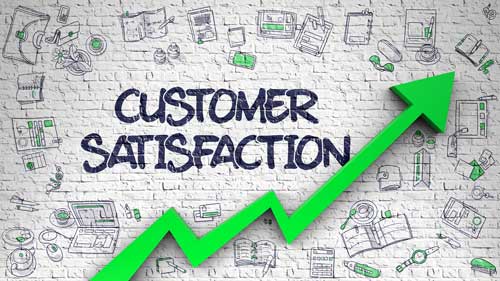Customers will choose 100% satisfaction over “good enough” every time. It’s that tenth of a percentage point that makes the big difference.

Most people think that 99% satisfaction is good enough… but is it?
If 99.9% was good enough, then:
- Two airliners would crash each and every day.
- The IRS would lose approximately 2 million documents a year.
- Thousands of prescriptions for medicine would be the wrong dosage, wrong count, or even the wrong medicine each day.
- At least a thousand telephone calls would be misdirected every minute.
99.9% quality assurance translates into one fault for every 1000 tries, and that’s just not good enough.
If you want to meet customer satisfaction goals that translate into growing the business, you will have to do better. Don’t shrug and mumble about that one-tenth of one percent. Track errors. Set error elimination goals. Structure or systemize error elimination review. Finally, work to eliminate errors completely.
A “Customer Satisfaction Improvement” project would look something like this:
- Discover points of customer dissatisfaction.
- Define these points – make them as specific as possible.
- Measure and rank frequency of dissatisfaction – which are most common / easiest to overcome / etc.
- Create projects to overcome these points of dissatisfaction.
- Prioritize primary projects to overcome dissatisfaction – which to tackle first, second, etc.
- Create task forces, timelines, and budgets for the top prioritized projects.
- Develop a process to measure progress.
- As projects succeed, add new projects to overcome secondary points of dissatisfaction.
Obviously, this eight-point list is overly-simplified, but it is an outline of the process. You will want to customize it to fit your company, your limitations, your products, your customer base and their expectations.
The goal of most businesses is to make the customer or prospect feel they are getting either perceived or measurable added-value, not 99.9% value. That means giving customers 100% accuracy, quality, and value 100% of the time and then adding a little more value to that so they feel they received 110% or even 125% value.
Customers today have many choices and they can buy the products and services you sell from companies all over the globe. They no longer have geographic limitations and need to buy from only their local sphere. Customers will choose 100% satisfaction over “good enough” every time. It is that tenth of a percentage point that makes the big difference. Make 100% satisfaction a marketing goal in your business, then add some value to that, and 100% of your customers will be back.
About the Author
Larry Galler works with professionals, small-business owners, contractors, and entrepreneurs to increase sales and profits through better, more creative marketing and effective administration systems.




